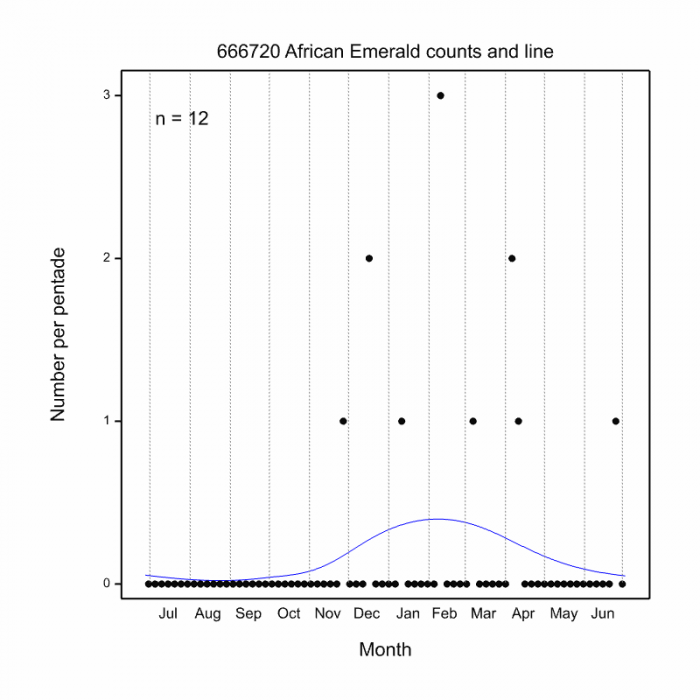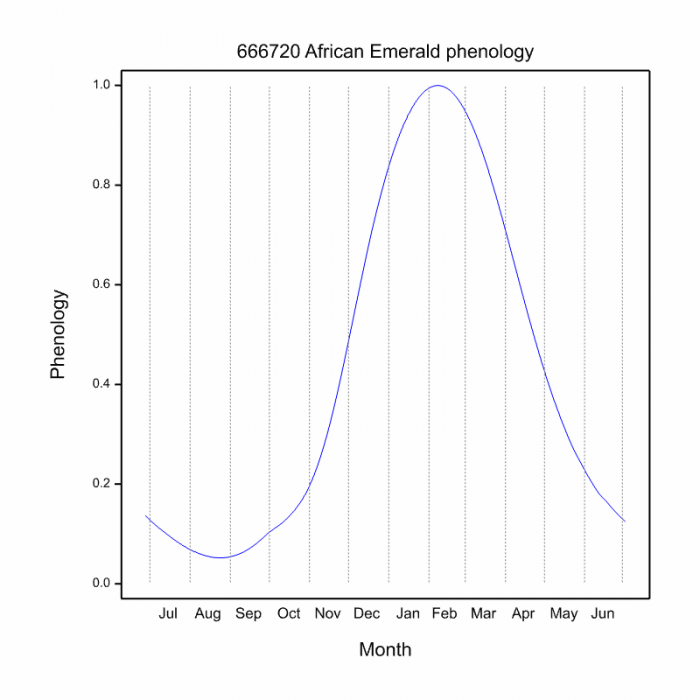View the above photo record (by Richard Johnstone) in OdonataMAP here.
Find the African Emerald in the FBIS database (Freshwater Biodiversity Information System) here.
Family Corduliidae
Hemicordulia africana – AFRICAN EMERALD
Hemicordulia africana is the only African member of this largely Asian family.
Identification
Medium-large size
Length reaches 47mm; Wingspan up to 65mm.
Unlike any other dragonfly in the region. The metallic green colouration, combined with its unique wing venation and tiny black pterostigmas render this species unmistakable. In poor light conditions, which is when this species is most active, the overall colouration appears dark blackish-green. In sunlight it is bright metallic green.
Females are less colourful than the males and show a reduced amount of metallic colouration and have dark yellow wing bases.
Could be mistaken for Zyxomma atlanticum (Smoky Duskdarter), especially in flight and in poor light. Both species occur in the same habitat and are similar in size and behaviour.
Click here for more details on identification of the African Emerald.
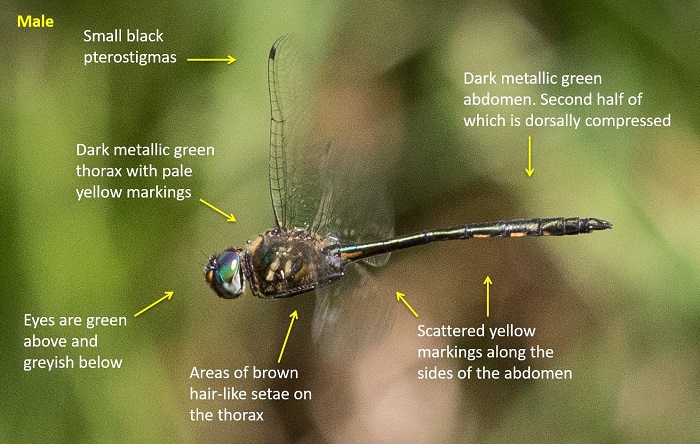
Richardsbay, KwaZulu-Natal
Photo by Georg Jacobs
Habitat
A forest dwelling species of coastal forest and especially swamp forests in NE KwaZulu-Natal. Breeds at forested pools, streams and rivers.
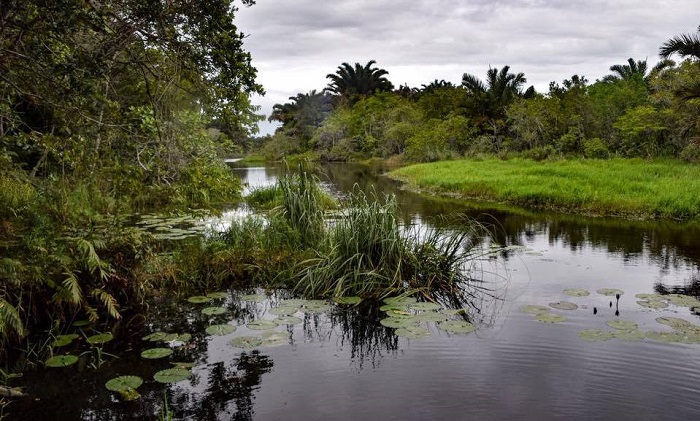
Photo by Lauren Arnold.
Behaviour
The African Emerald is elusive and crepuscular, being most active at dusk, but also emerges at other times, during very humid conditions. Hunts back and forth along forest edges and clearings near water. Somewhat inquisitive and may approach an observer before moving off again. Regularly pauses to rest by hanging vertically from a perch. Spends much of the day hidden in dense, shaded vegetation.
The presence of this species is erratic and it may be absent from some areas during drought periods.
Status and Conservation
Uncommon and localised. Listed as Near Threatened in the IUCN Red List of Threatened Species.
Distribution
Hemicordulia africana has a disjunct distribution in Eastern and Southern Africa, although it is likely to be under recorded in many areas.
In South Africa it is restricted to the coastal plain of NE KwaZulu-Natal, where it is found from Kosi Bay down to Richards Bay.
Below is a map showing the distribution of records for African Emerald in the OdonataMAP database as at February 2020.
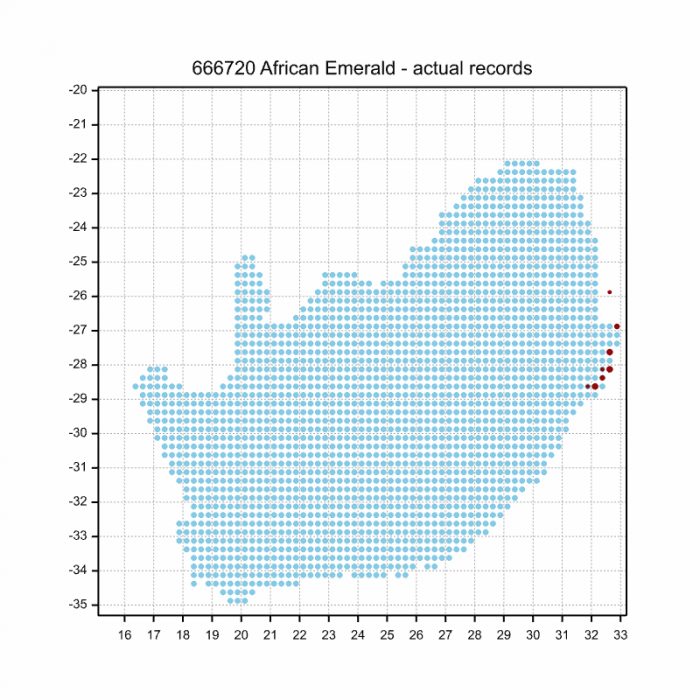
The next map below is an imputed map, produced by an interpolation algorithm, which attempts to generate a full distribution map from the partial information in the map above. This map will be improved by the submission of records to the OdonataMAP section of the Virtual Museum.

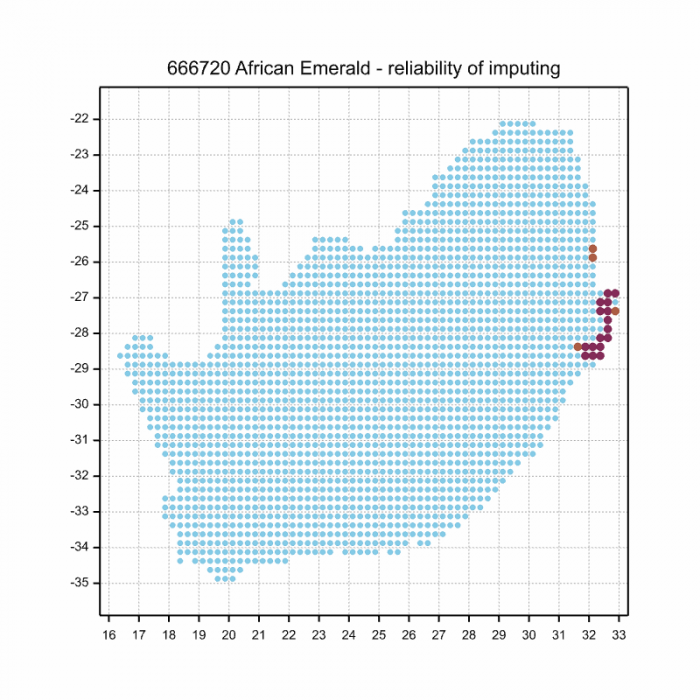
Ultimately, we will produce a series of maps for all the odonata species in the region. The current algorithm is a new algorithm. The objective is mainly to produce “smoothed” maps that could go into a field guide for odonata. This basic version of the algorithm (as mapped above) does not make use of “explanatory variables” (e.g. altitude, terrain roughness, presence of freshwater — we will be producing maps that take these variables into account soon). Currently, it only makes use of the OdonataMAP records for the species being mapped, as well as all the other records of all other species. The basic maps are “optimistic” and will generally show ranges to be larger than what they probably are.
These maps use the data in the OdonataMAP section of the Virtual Museum, and also the database assembled by the previous JRS funded project, which was led by Professor Michael Samways and Dr KD Dijkstra.
